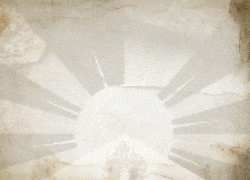25 April 2014, Bylakuppe: Today, we are gathered here to observe the auspicious 25th birthday of His Holiness the 11th Panchen Lama in an event organized by the Central Tibetan Administration’s (CTA) Regional Organising Committee of the 25th Birth Anniversary of the 11th Panchen Lama.
On behalf of the Tashi Lhunpo Monastery and the Central Association of His Holiness the Panchen Lama, I extend a warm welcome to our most esteemed guests — His Eminence Gaden Tripa Rizong Sey Rinpoche, Head of the Gelugpa School of Tibetan Buddhism, Mr Penpa Tsering, Honorable Speaker of the Tibetan Parliament in exile, Sikyong Dr. Lobsang Sangay, the democratically-elected political head of the CTA, His Eminence Lochen Rinpoche, Abbotts and monks of different monastic schools, Chief Representative Officer of South Zone, Settlement officers of the old and new settlements in Bylakuppe, heads of various schools and institutions of learning, and members of the public.
Today marks 25 years since His Holiness the 11th Panchen Lama, Jetsun Tenzin Gedhun Yeshi Trinley Phuntsok Pal Sangpo, was born in Lhari County, Nagchu, Tibet to Kunchok Phuntsok and Dechen Choedon. On this auspicious day, the Tashi Lhunpo Monastery, on behalf of Tibetans everywhere, with immense veneration, wish for the good health and happiness of the 11th Panchen Lama and offer prayers for his well being.
It is a well known fact that the Panchen Lama has always been an important figure in Tibet’s spiritual and political history. Historically, all the Panchen Lamas, in their lifetime, have made tremendous contributions to the spread and propagation of Tibetan Buddhism, while simultaneously working for the well being of all sentient beings. The 10th Panchen Lama, in particular, was renowned for his fearlessness and role in ensuring the welfare of the Tibetan people during one of Tibet’s darkest periods. A harsh critic of the Chinese government’s policies in Tibet, the 10th Panchen Lama was relentless in his efforts to seek redress for the atrocities committed against the Tibetan people by the Chinese government. As a result, he suffered 14 long years of imprisonment and was subjected to untold mental and physical torture at the hands of the Chinese government. Despite these hardships, the 10th Panchen Lama was unwavering in his crusade to improve the social, economic, political, and environmental conditions in Tibet and, most importantly, to promote and revive the Tibetan language, religion, and culture.
In 1989, the 10th Panchen Lama was only 52 when he passed away under mysterious circumstances after delivering a public speech in which he was sharply and openly critical of the Chinese government’s policies. Since then, over the past 25 years, we have witnessed a swift deterioration of the political, economic, and social conditions of the Tibetan people in Tibet, accompanied with the Chinese government’s heightened efforts to systematically wipe out the Tibetan culture, language, and religion — all of which form the very basis of the Tibetan identity. In addition, China’s violation of the Tibetan people’s religious freedoms and human rights have worsened over the past 25 years, amid growing economic and social inequality.
Today, we cannot help but remember the 10th Panchen Lama’s greatness, foresight, wisdom, sacrifices, and courage, and we offer prayers for the fulfilment of his aspirations and vision for Tibet.
Tibetans have always referred to His Holiness the Dalai Lama and His Holiness the Panchen Lama as the “Sun and Moon” – recognizing the special historical and spiritual relationship they share in leading the search for each other’s reincarnation and ensuring the other’s subsequent religious education. In keeping with the historical tradition of recognizing each other’s incarnation, His Holiness the 14th Dalai Lama on 14 May 1995 publicly announced Gedhun Choekyi Nyima as the rightful incarnate of His Holiness the 10th Panchen Lama. A mere three days after this announcement was made, Chinese authorities abducted the then six-year old lama, along with his parents, and Chadrel Jampa Trinley Rinpoche, the then Abbott of the Tashi Lhunpo Monastery and head of the Search Committee for the 11th Panchen Lama, among others. With no regard whatsoever for the Tibetan people’s religious aspirations and freedom, the Chinese government instead appointed Gyaltsen Norbu, another young boy from Nagchu, as the 11th Panchen Lama.
Since their abduction in 1995, the world has not seen or heard from the 11th Panchen Lama and Chadrel Rinpoche; their whereabouts remain unknown till date and the Chinese government’s assurances of their well being are questionable, as authorities have not offered any concrete proof over the past 19 years to substantiate their claims. Despite repeated calls and campaigns for their release, Chinese authorities have continued to play a deaf ear, refusing requests by UN human rights groups and other international bodies to allow an independent figure to meet the young lama and verify his well being.
As such, it is with a sense of great concern and sadness that we observe this 25th birth anniversary of the 11th Panchen Lama. In the past 19 years, the young Panchen Lama, who was once the world’s youngest political prisoner, has turned into a 25 year old adult under Chinese custody; through this time, the young lama has been denied his fundamental rights, clearly highlighting the fact that Tibetans in Tibet do not enjoy basic human and child rights, and religious freedom. The experiences of the previous and the current Panchen Lamas, undoubtedly, serve as strong testimony of the Chinese government’s conscious and deliberate efforts to control every aspect of the Tibetan way of life, which, in effect, has and is still continuing to provoke the self-immolations protests.
Over the past few years, more than a hundred Tibetans in Tibet and in exile have sacrificed their lives to protest Chinese policies in Tibet by setting their bodies on fire. All the self immolators were unified in their call for freedom for the Tibetans, the return of His Holiness the Dalai Lama and the release of the Panchen Lama. Until now, Tibetans have been firm believers in and followers of non violence in our struggle to find a resolution to the Tibetan issue, boosted in part by our religious view and the gentle Tibetan human nature. However, Tibetans have now been forced to resort to drastic expressions of resistance such as self immolations. If the Chinese government does not heed their call quickly enough, Tibetans could be pressured to adopt even more radical measures to protest Chinese policies in Tibet, which, in turn, would exacerbate the number of problems that the Chinese government has to deal with. Hence, the Chinese government should, without any further delay, make sincere efforts to find a peaceful resolution to the Tibetan issue under the Middle Way approach proposed by the Dalai Lama, as this is the only approach that seeks a mutually beneficial solution for both Tibetans and Chinese.
This year, the Central Tibetan Administration has organised this event to mark 25 years since the birth of the 11th Panchen Lama — a much-needed endeavour on the part of the government given the political, spiritual and historical significance of the Panchen Lama. Tibetans in Tibet and in exile welcome the CTA’s move and are unified in our expression of gratitude to the CTA for this undertaking, and, without doubt, regard this as one of Sikyong Dr. Lobsang Sangay’s key achievements.
We are also grateful to all those individuals and organizations — both governmental and non governmental — that have relentlessly campaigned for the release of the Panchen Lama, Chadrel Rinpoche and other political prisoners. We thank you for your support and beseech you to continue this fight for their release until we achieve our goal.
We pray for the swift, just and peaceful resolution to the Tibetan issue and for the long life of His Holiness the Dalai Lama and the Panchen Lama, and earnestly await the day when the Tibetan people’s Sun and the Moon would be reunited in Tibet.









